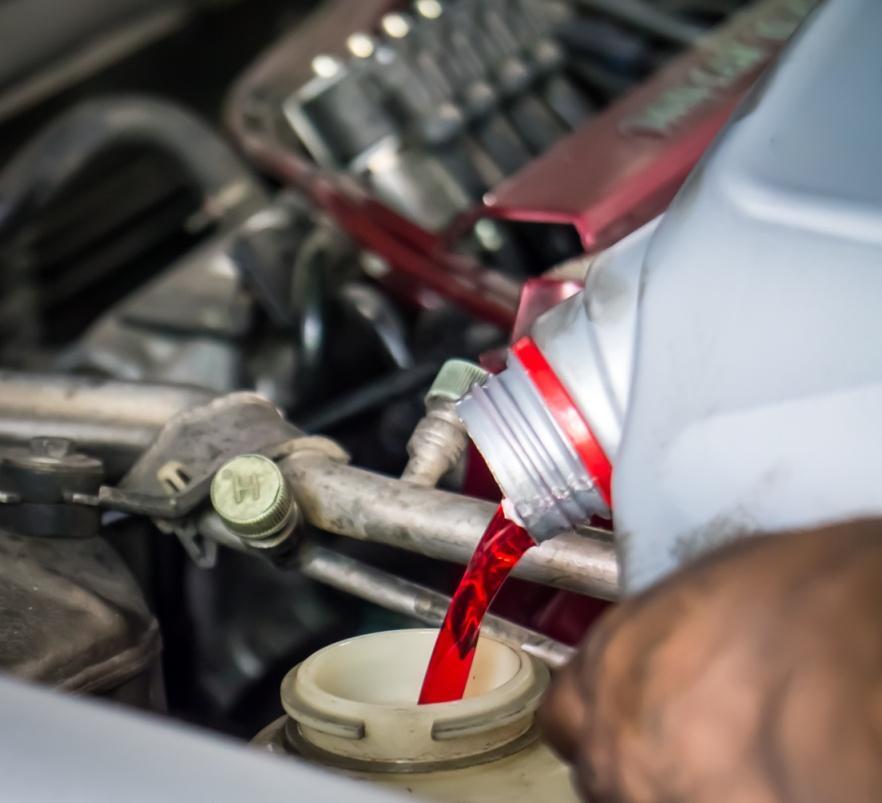What are the Symptoms of Low Transmission Fluid?
First of all, you may be wondering, what is transmission fluid? Transmission fluid is a slippery liquid that lubricates all the surfaces and components of the transmission system so they don’t wear out too quickly by preventing excessive friction and overheating. It also serves as a viscous fluid that transmits power from the engine to the transmission.
Transmission fluid is supposed to remain in your vehicle for its entire lifespan without changing it, although some mechanics will tell you that you should change it every 50,000 miles.
However, if your transmission develops a leak because of a worn out or damaged component, you may start to notice some or all of the following symptoms of low transmission fluid:
- Delayed Shifting. There may be a temporary delay after you move the gear stick to reverse or drive. The gear change cannot be activated immediately if there isn’t enough pressure.
- Difficult or Erratic Shifting. If there is a lot of dirt or residue in the transmission fluid, the gears will either change too fast or too slow. Other symptoms include abrupt up/down shifts, unusually high RPMs before a shift, erratic shifting, and a groaning or grinding noise coming from the transmission.
- Gear Slippage. You may change gear, but then it seems to fall back out of that gear. The friction material on the clutches and transmission bands are no longer able to securely engage a gear.
- Transmission Overheats. In an automatic, the transmission fluid keeps the transmission unit from overheating. A low fluid is indicated by erratic shifts, delayed shifts, power loss, gear slippage, burning smells, or smokiness. If you notice any of these, pull over immediately and let everything cool down. If the temperatures get to be over 240°F, then you may have serious damage internally.
If any of the above symptoms persist after you’ve topped off the transmission fluid, then it’s very likely that your transmission will need to be rebuilt or replaced. To avoid this, start checking your transmission fluid on a regular basis. If you put a lot of miles on your vehicle or tow heavy loads, then you should check it at least every two weeks. Otherwise, most drivers can check it once a month (unless there’s a leak)
Looking for quality transmission service? Contact our ASE Certified Technicians at Cannon Auto Repair today for more information about the symptoms of low transmission fluid and to schedule an appointment. Our auto shop serves vehicle owners in Cannon Falls, MN, and the surrounding areas.
If you neglect routine transmission service on your vehicle, you may start experiencing some of the symptoms of low transmission fluid. Make an Appt today at your auto shop!
First of all, you may be wondering, what is transmission fluid? Transmission fluid is a slippery liquid that lubricates all the surfaces and components of the transmission system so they don’t wear out too quickly by preventing excessive friction and overheating. It also serves as a viscous fluid that transmits power from the engine to the transmission.
Transmission fluid is supposed to remain in your vehicle for its entire lifespan without changing it, although some mechanics will tell you that you should change it every 50,000 miles.
However, if your transmission develops a leak because of a worn out or damaged component, you may start to notice some or all of the following symptoms of low transmission fluid:
- Delayed Shifting. There may be a temporary delay after you move the gear stick to reverse or drive. The gear change cannot be activated immediately if there isn’t enough pressure.
- Difficult or Erratic Shifting. If there is a lot of dirt or residue in the transmission fluid, the gears will either change too fast or too slow. Other symptoms include abrupt up/down shifts, unusually high RPMs before a shift, erratic shifting, and a groaning or grinding noise coming from the transmission.
- Gear Slippage. You may change gear, but then it seems to fall back out of that gear. The friction material on the clutches and transmission bands are no longer able to securely engage a gear.
- Transmission Overheats. In an automatic, the transmission fluid keeps the transmission unit from overheating. A low fluid is indicated by erratic shifts, delayed shifts, power loss, gear slippage, burning smells, or smokiness. If you notice any of these, pull over immediately and let everything cool down. If the temperatures get to be over 240°F, then you may have serious damage internally.
If any of the above symptoms persist after you’ve topped off the transmission fluid, then it’s very likely that your transmission will need to be rebuilt or replaced. To avoid this, start checking your transmission fluid on a regular basis. If you put a lot of miles on your vehicle or tow heavy loads, then you should check it at least every two weeks. Otherwise, most drivers can check it once a month (unless there’s a leak)
Looking for quality transmission service? Contact our ASE Certified Technicians at Cannon Auto Repair today for more information about the symptoms of low transmission fluid and to schedule an appointment. Our auto shop serves vehicle owners in Cannon Falls, MN, and the surrounding areas.
